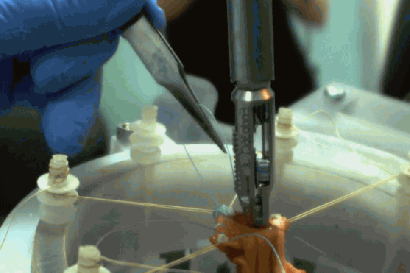The Cutting Edge of Medical Technology Content, Community & Collaboration
All medical devices have their stated intended use. With time, many of them undergo changes with use. Because of this, they need to be calibrated to retain their effectiveness. The FDA’s medical device calibration requirements have been devised with the same intention.
Although the FDA has medical device calibration requirements, many of these medical devices do not have specific measures that need to be set. So, in view of this, the FDA can only require that the core quality needed for the medical device’s function -the ability to meet its intended use -is met from time to time.

The FDA’s code of regulations for medical device calibration requirements
The FDA has a code of regulations for medical device calibration requirements: Part 820 of its QSR, Section 72. 21 CFR Part 820.72, which deals with inspection, measuring, and test equipment; states that medical device calibration requirements shall cover the control of these aspects of the medical device. It broadly states that manufacturers have to ensure that “…all inspection, measuring, and test equipment, including mechanical, automated, or electronic inspection and test equipment, is suitable for its intended purposes and is capable of producing valid results”.
Further, it also requires medical device manufacturers to have procedures in place for calibrating, inspecting, checking and maintaining equipment. Also included in these procedures are provisions relating to how to handle, preserve and store equipment.
Medical device calibration requirements in relation to calibration
As for calibration requirements in particular, the FDA’s medical device calibration requirements require medical device companies to have procedures in place that specifically offer directions and limits with regard to precision and accuracy. When a medical device fails to meet these standards for precision and accuracy; the FDA will evaluate if these have the potential to cause harm in the form of adverse effect on the patient. If these are discovered, the manufacturer has to calibrate the medical device to improve quality till the standards are met. All these procedures are to be documented.
Medical device calibration requirements in relation to standards
On the question of standards, in the absence of standards specifically meant for medical device calibration requirements; the FDA states that relevant international, national, state or local standard have to apply. In the absence of any of these; the company has to form its own set of standards for meeting medical device calibration requirements.
 https://compliance4all14.files.wordpress.com/2018/02/celyon-2071-p-qa-es_iii_electrosurgical_analyzer_1280x852px_e_nr-20604.jpg?w=834&h=556 834w, https://compliance4all14.files.wordpress.com/2018/02/celyon-2071-p-... 150w, https://compliance4all14.files.wordpress.com/2018/02/celyon-2071-p-... 300w, https://compliance4all14.files.wordpress.com/2018/02/celyon-2071-p-... 768w" sizes="(max-width: 417px) 100vw, 417px" width="417" height="278" />
https://compliance4all14.files.wordpress.com/2018/02/celyon-2071-p-qa-es_iii_electrosurgical_analyzer_1280x852px_e_nr-20604.jpg?w=834&h=556 834w, https://compliance4all14.files.wordpress.com/2018/02/celyon-2071-p-... 150w, https://compliance4all14.files.wordpress.com/2018/02/celyon-2071-p-... 300w, https://compliance4all14.files.wordpress.com/2018/02/celyon-2071-p-... 768w" sizes="(max-width: 417px) 100vw, 417px" width="417" height="278" />
Documentation of medical device calibration
Part 21 CFR 820.72 of the FDA clearly states that the medical device manufacturer has to document all the points of calibration such as the date on which the device was identified and taken up for calibration, the name of the staff who did this, and when the next calibration is due. All these records have to be made publicly available to designated staff in the medical device company. All these form part of the FDA’s medical device calibration requirements.
Views: 12
Comment
© 2025 Created by CC-Conrad Clyburn-MedForeSight.
Powered by
![]()
You need to be a member of MedTech I.Q. to add comments!
Join MedTech I.Q.